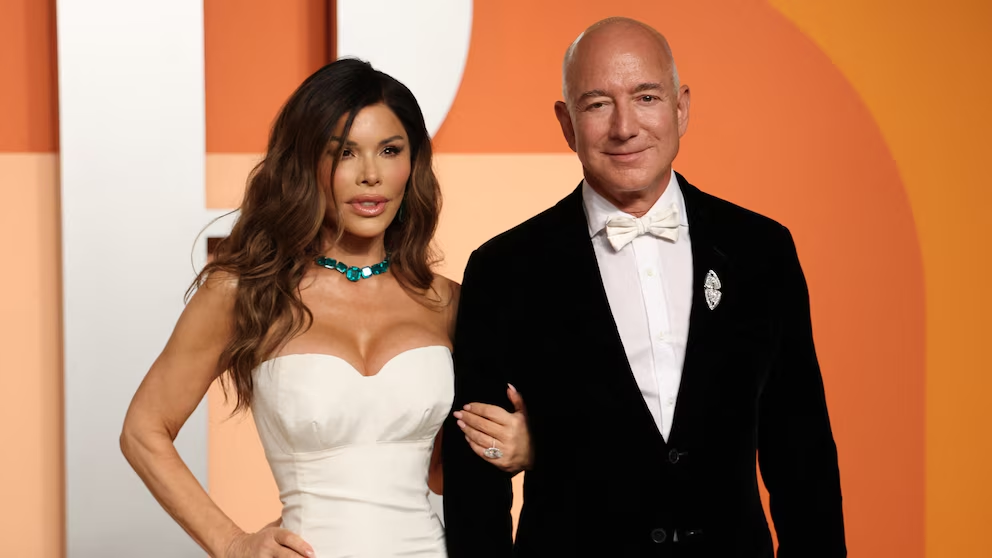
- Introduction: "The Wedding of the Century" Takes Over the Floating City
- The Guest List: A-Listers, Moguls, and Reality TV Royalty Descend on Venice
- The Venues and Logistics: A Floating Fortress of Opulence and Secrecy
- The Price of Extravagance vs. The Performance of Patronage
- Conclusion: A Union of Glamour, Controversy, and the New Celebrity Paradigm
Introduction: “The Wedding of the Century” Takes Over the Floating City
In late June 2025, the historic canals and ancient palazzos of Venice, Italy, became the backdrop for what was immediately dubbed “the wedding of the century”. The multi-day nuptials of Amazon founder Jeff Bezos and Emmy-winning journalist Lauren Sánchez were not merely a private celebration but a global media event, a convergence of immense wealth, A-list celebrity power, and intense public scrutiny. The festivities, scheduled from approximately June 24 to June 28, transformed the serene lagoon city into a high-security hub of opulent parties and star-studded arrivals.
The couple, who have been publicly linked since 2018 and became engaged in 2023, signaled the scale of the event from the moment of their arrival. Descending upon Venice by helicopter before navigating its famous waterways via a private water taxi flanked by security boats, Bezos and Sánchez set a tone of grandeur and exclusivity. However, this display of lavishness immediately cast a spotlight on the central tension that would define the affair: the celebration of a billionaire’s union against a backdrop of local protest, logistical complexity, and a heated debate about the role of the ultra-wealthy in culturally sensitive locations. This report delves into the meticulously planned details of the wedding, from its exclusive guest list and historic venues to the staggering costs and the significant controversy that shadowed the glamour.
The narrative of the Bezos-Sánchez wedding is one of profound contradiction. On one hand, it was a fairy-tale event meticulously crafted to project an image of sophisticated glamour. On the other, it was a logistical fortress, forced to adapt in real-time to vocal opposition from local activists. This duality is evident even in the reported cost of the event. While some sources close to the planning cited a figure between $10 and $20 million, the president of the Veneto regional government, Luca Zaia, told reporters the three-day affair could cost between $64 million and $76 million. This vast discrepancy is more than a simple accounting error; it reflects the deep chasm between the narrative the event organizers wished to project and the public perception of unrestrained excess. This conflict was further mirrored in the city’s official stance. While the Venice city administration defended the nuptials as being in line with its long tradition as an “open city” that welcomes all, activists on the ground launched a “No Space for Bezos” campaign, arguing the event exploited a city already suffering from overtourism and inequality. The story of this wedding, therefore, is not just about who attended or what they wore, but about the clash of these competing realities.
The Guest List: A-Listers, Moguls, and Reality TV Royalty Descend on Venice
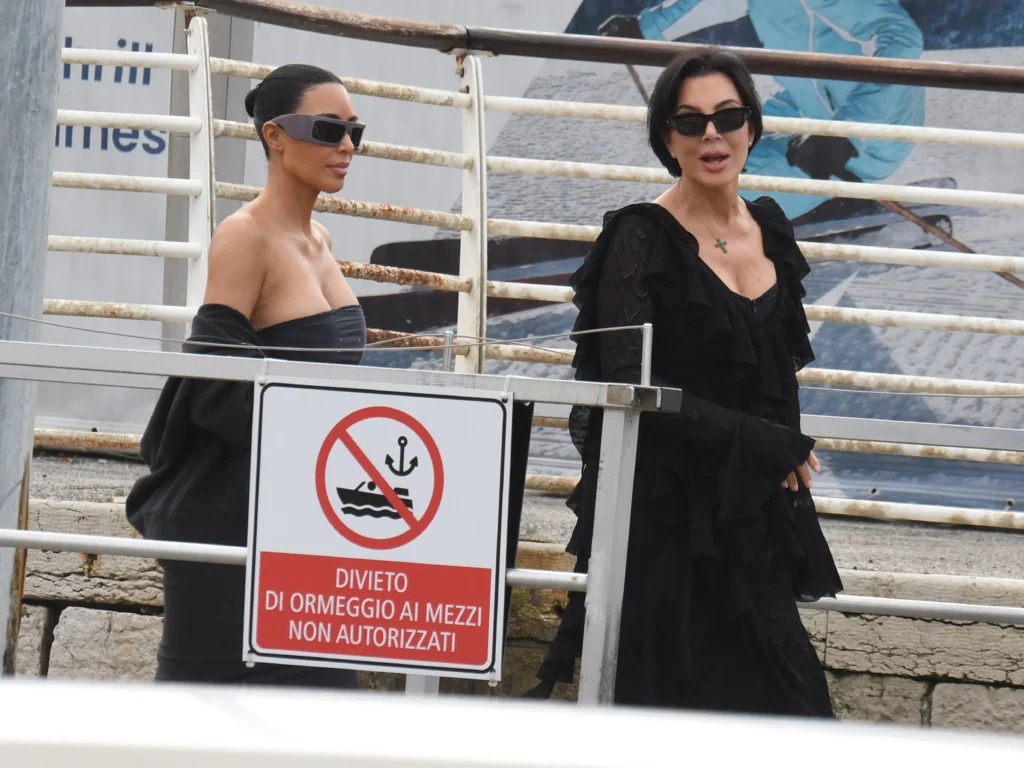
A primary driver of global interest in the wedding was its spectacular guest list, a curated collection of some of the most powerful and recognizable figures in entertainment, business, and media. Over several days, Venice’s Marco Polo airport and private docks saw a parade of celebrities arriving by private jet and water taxi to celebrate with the couple.
The arrivals confirmed the event’s A-list status. Media mogul Oprah Winfrey was among the most high-profile guests, arriving with her close friend and fellow television personality, Gayle King. The world of sports was represented by legendary NFL quarterback Tom Brady, who arrived solo for the festivities. The Kardashian-Jenner family made a significant showing, with matriarch Kris Jenner, her daughters Kim and Khloe Kardashian, and Corey Gamble all photographed arriving in high style.
The Hollywood contingent included actor Orlando Bloom, while the fashion world was represented by iconic designer Diane Von Furstenberg. Political influence was also present in the form of Ivanka Trump and her husband Jared Kushner, who arrived early in the week. The guest list extended to powerful figures behind the scenes in Hollywood, including super-agent Ari Emanuel and acclaimed film producer Brian Grazer. Interestingly, some initial reports noted that singer Katy Perry was expected to attend, but later updates suggested she was not present. Similarly, it was reported that former President Donald Trump received an invitation but did not attend the Venice ceremony.
To provide a clear overview of the high-profile attendees, the following table consolidates information from various reports.
| Guest Name | Known For | Arrival Details (Date/Sighting) |
| Oprah Winfrey | Media Mogul, Talk Show Host | Arrived at Marco Polo airport on June 26 |
| Tom Brady | Former NFL Quarterback | Arrived solo on June 26 |
| Kim Kardashian | Reality TV Star, Entrepreneur | Arrived at Marco Polo airport on June 26 |
| Khloe Kardashian | Reality TV Star, Entrepreneur | Arrived at Marco Polo airport on June 26 |
| Kris Jenner | Reality TV Star, “Momager” | Arrived at Marco Polo airport on June 26 |
| Gayle King | Broadcast Journalist | Arrived with Oprah Winfrey |
| Orlando Bloom | Actor | Seen out and about in Venice ahead of the wedding |
| Ivanka Trump | Businesswoman, Former Presidential Advisor | Arrived with Jared Kushner on June 24 |
| Jared Kushner | Businessman, Former Presidential Advisor | Arrived with Ivanka Trump on June 24 |
| Diane Von Furstenberg | Fashion Designer | Arrived on June 24 |
| Corey Gamble | Talent Manager, Reality TV Personality | Arrived at Marco Polo airport on June 26 |
| Ari Emanuel | CEO of Endeavor, Talent Agent | Arrived with wife Sarah Staudinger |
| Brian Grazer | Film Producer | Arrived with wife Veronica Smiley Grazer |
The Venues and Logistics: A Floating Fortress of Opulence and Secrecy
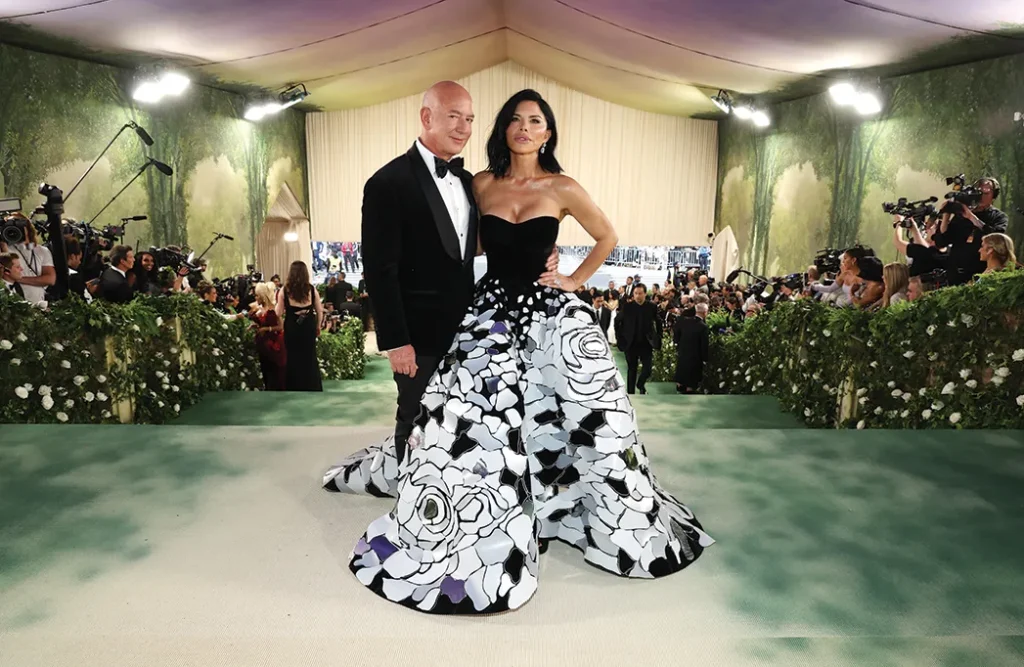
The logistical undertaking for the Bezos-Sánchez wedding was immense, transforming parts of Venice into a high-security, ultra-exclusive zone. The couple’s home base for the week was the opulent Aman Hotel, a five-star luxury resort housed in a 16th-century palazzo on the Grand Canal, where they were first sighted upon their arrival.
A key player in the festivities was Bezos’s $500 million mega-yacht, Koru. While the colossal vessel was a centerpiece of the celebration, its size prevented it from navigating the city’s historic Grand Canal. Weighing 3,493 gross tons, it far exceeded the limits for ships entering the most picturesque parts of the lagoon and had to remain anchored offshore, serving as a floating palace for some events.
The multi-day schedule was spread across some of Venice’s most historic and beautiful locations. The main wedding ceremony was slated for June 26 at the Chiesa della Madonna dell’Orto, a 15th-century Gothic church in the Cannaregio district. Other planned events included receptions at the Fondazione Giorgio Cini, a cultural center on the island of San Giorgio Maggiore, and a large party at the Scuola Grande della Misericordia, a medieval former school.
However, the meticulously laid plans were forced to change, demonstrating the direct impact of the public backlash. The planned party for over 200 guests on June 28 at the Scuola Grande della Misericordia was abruptly moved to a new location due to escalating protests and security concerns. This was not a minor logistical adjustment but a strategic retreat in the face of effective activism. Protesters had explicitly stated their intention to “disrupt the arrivals of guests” at the original venue, prompting organizers to seek a more defensible location. The new venue chosen was a hall within the Arsenale, a vast 14th-century complex of former shipyards in the eastern Castello district. The choice was telling; the Arsenale is surrounded by water and becomes virtually unreachable by land when its connecting bridges are raised, effectively turning the celebration into a fortified event. This move, which protest groups hailed as a victory, underscored the extent to which the controversy shaped the very structure of the wedding, transforming it from an open celebration into a “fortress-like operation”.
The Price of Extravagance vs. The Performance of Patronage
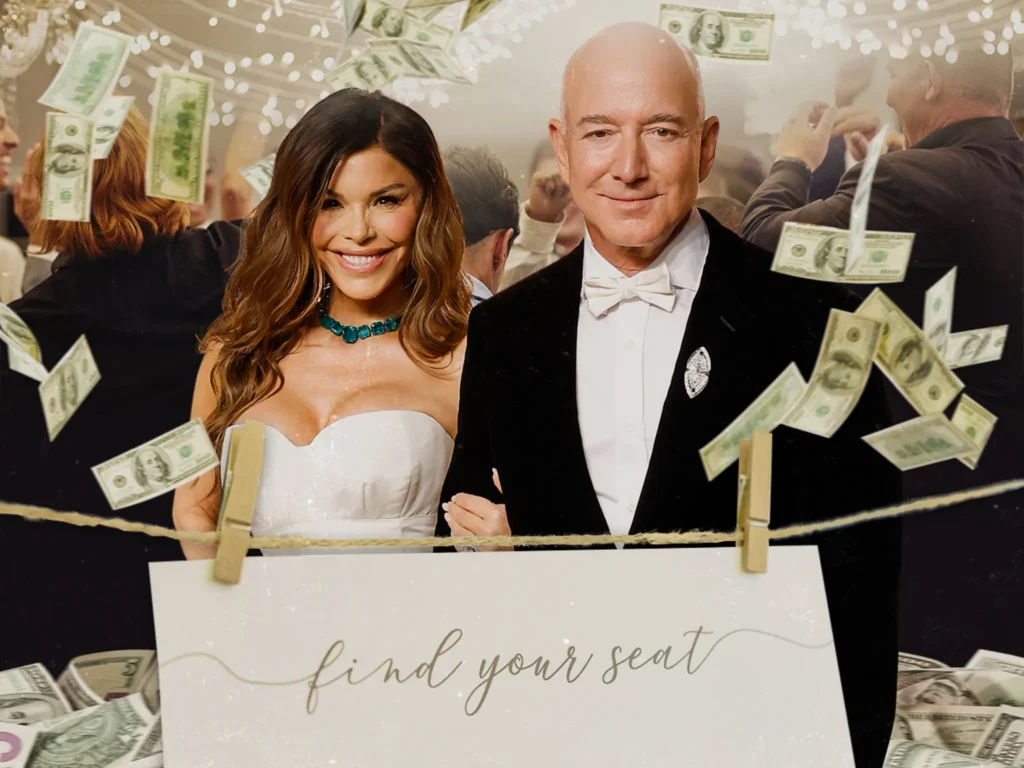
The financial scale of the wedding was a central point of contention and fascination. With cost estimates ranging from a conservative $10 million to an astonishing $76 million, the event was undeniably one of the most expensive private celebrations in recent memory. The planning and execution were entrusted to the elite London-based event company Lanza & Baucina, known for orchestrating prestigious, high-budget events, particularly in Venice.
Amid the protests decrying the wedding as an exploitative display of wealth that disregarded the host city, a counter-narrative began to emerge from sources associated with the couple. This narrative centered on the idea of local patronage and a conscious effort to integrate Venetian culture and commerce into the festivities. It was repeatedly reported that the couple had made a deliberate choice to source approximately 80% of the provisions for their wedding from local Venetian vendors.
This was not just a vague commitment; specific local artisans were named as partners. These included Rosa Salva, a landmark pastry shop founded in 1876, and Laguna B, a celebrated design studio renowned for its handblown Murano glass, which was tapped to provide decorations. This focus on local sourcing can be interpreted as a sophisticated public relations strategy. As activists unfurled banners in St. Mark’s Square with messages like, “IF YOU CAN RENT VENICE FOR YOUR WEDDING YOU CAN PAY MORE TAX,” the couple’s camp was simultaneously highlighting their support for the city’s artisanal heritage. This carefully managed messaging was a direct response to the criticism of economic extraction. It attempted to reframe the narrative from one of a billionaire simply consuming a city for his own pleasure to one of a patron actively contributing to its economy. This performance of “conscious consumption” represents a modern strategy for the ultra-wealthy to manage their public image while engaging in displays of extreme opulence.
Conclusion: A Union of Glamour, Controversy, and the New Celebrity Paradigm
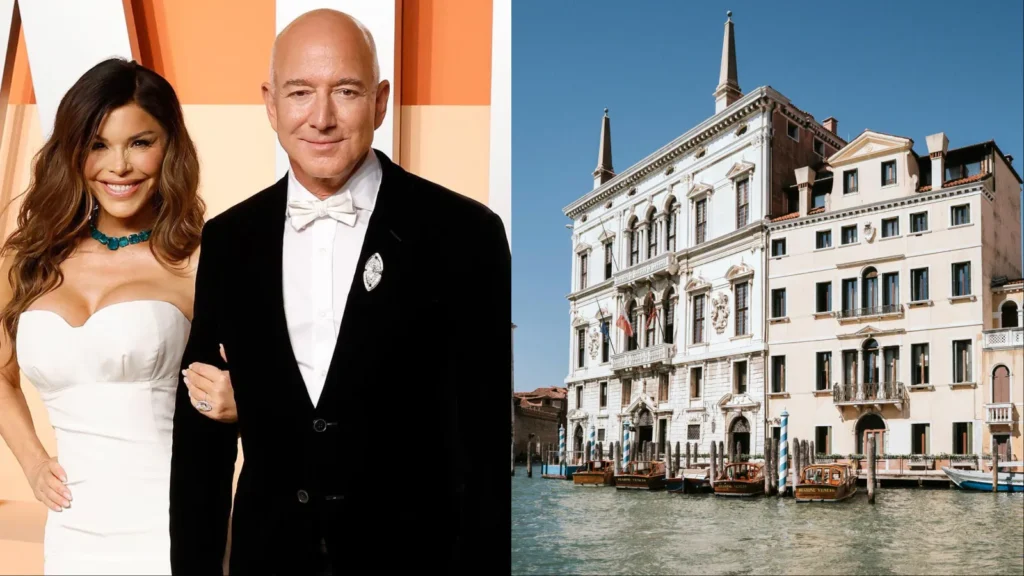
The wedding of Jeff Bezos and Lauren Sánchez in Venice was far more than a simple union of two people. It was a cultural touchstone, a multi-million-dollar spectacle that encapsulated the complex dynamics of modern celebrity, wealth, and public accountability. For three days, the world watched as a fairy-tale event, complete with A-list stars and breathtaking backdrops, unfolded in one of the world’s most beloved cities.
Yet, this picture of glamour was inseparable from the controversy that surrounded it. The event could not escape the very real-world issues of economic inequality, overtourism, and environmental concern that its sheer scale brought into sharp focus. The protests were not just background noise; they were a force that tangibly altered the course of the celebration, forcing a last-minute venue change and transforming an open party into a secured fortress. The wedding became a microcosm of a larger societal conversation, a lavish affair that served as both a celebration of extreme wealth and a lightning rod for criticism against it. In the end, the union of Bezos and Sánchez in the “open city” of Venice will be remembered as much for the security cordons and protest signs as for the celebrity guest list and designer gowns, marking a definitive moment in the ever-evolving paradigm of 21st-century fame.



1 comment
This was amazing my dream wedding